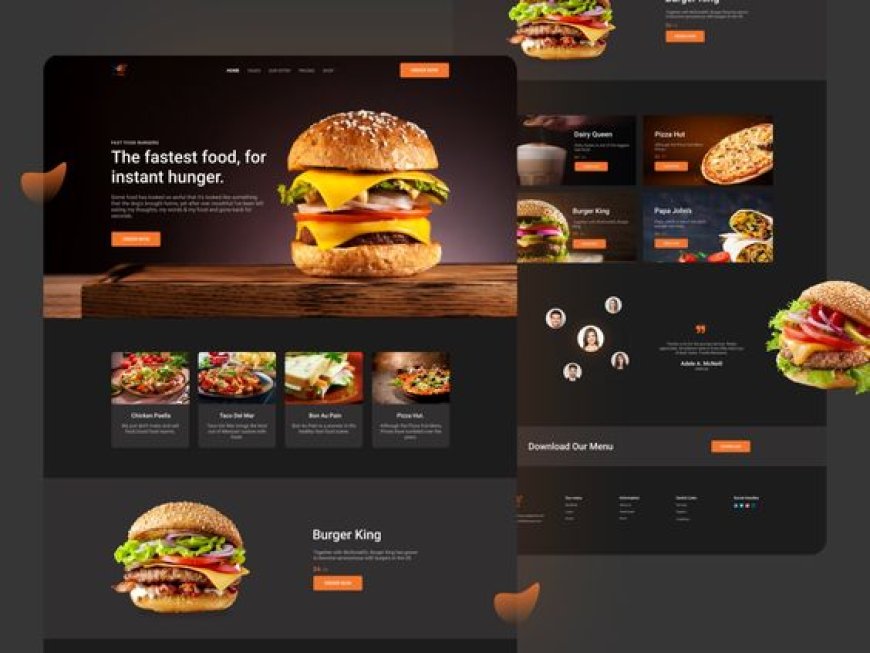Food E-Commerce Market Share Business Strategies To 2030

According to the Regional Research Reports, the Global Food E-Commerce Market size was valued at million USD in 2021 and will reach multi-million USD by 2030, at a CAGR of 15.50% from 2022 to 2030.
The Food E-Commerce Market consists of food, groceries, and similar services for home consumption. Grocery includes companies that process raw food ingredients and packaging and has online websites or remote sales applications. Typical Food on e-commerce sites contains packaged groceries, ready-to-eat meals, and alcoholic and non-alcoholic beverages. The main factors driving the market growth are the growing subscriptions and membership usage at online retailers.
Request Sample Copy of this Report: https://www.regionalresearchreports.com/request-sample/global-food-e-commerce-market/MC-1115?utm_source=free&utm_medium=harsh
Global Food E-Commerce Market Segmentation
Regional Research Reports has segmented the global Food E-Commerce market based on capacity, vehicle class, product type, and application at a regional and global level. Geographically, the research report has considered the five regions: North America, Europe, Asia Pacific, South America, and the Middle East & Africa. Moreover, the research study focuses on the market analysis of the tier-1 countries, such as the USA, China, Germany, India, the UK, Japan, France, Italy, Spain, Russia, South Korea, and other territories.
Global Food E-Commerce Market Analysis by Type
- Grocery delivery
- Pickup
- Others
Global Food E-Commerce Market Analysis by Delivery Channel
- Store pickup
- Home delivery
- Others
Global Food E-Commerce Market Analysis by End-User
- Households
- Businesses
Global Food E-Commerce Market Growth, by Region and Country, 2018-2021, 2022-2030 (US$ Millions)
Global Food E-Commerce Market Analysis by Region and Country
- North America (US, Canada, Mexico)
- Europe (Germany, UK, France, Italy, Spain, Russia, Switzerland, Poland, Belgium, the Netherlands, Norway, Sweden, Czech Republic, Slovakia, Slovenia, Rest of Europe)
- Asia Pacific (China, India, Japan, South Korea, Indonesia, Thailand, Malaysia, Vietnam, Singapore, Australia & New Zealand, Rest of Asia Pacific)
- South America (Brazil, Argentina, Peru, Colombia, Rest of South America)
- The Middle East & Africa (UAE, Saudi Arabia, South Africa, Egypt, Qatar, Northern Africa, Rest of MEA)
Direct Purchase Report: https://www.regionalresearchreports.com/buy-now/global-food-e-commerce-market/MC-1115?opt=2950&utm_source=free&utm_medium=harsh
Global Food E-Commerce Market Competitive: Key Players
The report includes a detailed analysis of leading market players, such as:
- Key companies Food E-Commerce revenues in the global market, 2018-2021 (Estimated), (US$ Millions)
- Key companies Food E-Commerce revenues market share in global market, 2021 (%)
- Key companies Food E-Commerce sold in the global market, 2018-2021 (Estimated)
Leading Food E-Commerce Manufacturers –
- Amazon Fresh
- Peapod
- Google Express
- Walmart
- Pepsi Co
- General Mills
- Nature Box
- Thrive Market
- Costco
- Kroger
(Note: The list of the key market players can be updated with the latest market scenario and trends)
Food E-Commerce Market Report Covers Comprehensive Analysis On:
- Market Segmentation & Regional Analysis
- Market Size of 10 years
- Pricing Analysis
- Supply & Demand Analysis
- Product Life Cycle Analysis
- Porter's Five Forces & Value/Supply Chain Analysis
- Developed & Emerging Economies Analysis
- PESTEL Analysis
- Market and Forecast Factor Analysis
- Market Opportunities, Risks, & Trends
- Conclusion & Recommendation
- Regulatory Landscape
- Patent Analysis
- Competition Landscape
- 15+ Company Profiles
Request For Report Discount: https://www.regionalresearchreports.com/request-for-special-pricing/global-food-e-commerce-market/MC-1115
Food E-Commerce Industry Overview
- Introduction to Food E-Commerce:
- Definition: The sale of food and beverage products through online platforms.
- Evolution of the industry: From traditional grocery shopping to modern digital platforms.
- Key milestones and innovations (e.g., Amazon Fresh, meal kit delivery services like Blue Apron).
- Market Size and Growth:
- Global market value and trends.
- Annual growth rates (CAGR) and projections.
- Key geographical markets: North America, Europe, Asia-Pacific, etc.
Key Drivers of Growth
-
Changing Consumer Behavior:
- Increased demand for convenience and time-saving solutions.
- Rise of mobile and online shopping platforms.
- Impact of COVID-19 on food shopping habits.
-
Technological Advancements:
- Role of AI and Big Data in food personalization.
- Importance of mobile apps, delivery optimization, and user experience.
- Use of blockchain for food safety and transparency.
-
Logistics and Delivery Innovations:
- Growth of quick commerce (Q-commerce) and 10-minute delivery services.
- Autonomous vehicles, drones, and last-mile delivery trends.
- Role of cold chain logistics and efficient packaging.
Consumer Demographics and Preferences
-
Demographic Insights:
- Urban vs. rural consumers.
- Generational shifts: Millennials, Gen Z, and Baby Boomers.
- Income levels and spending patterns on food e-commerce platforms.
-
Buying Patterns:
- Frequency of online food purchases.
- Types of food products bought online: Fresh produce, packaged goods, meal kits.
- Preferences for organic, local, or gourmet foods.
Competitive Landscape
-
Major Players in Food E-Commerce:
- Global companies: Amazon Fresh, Walmart, Alibaba, Instacart.
- Regional leaders and niche players.
- Emergence of direct-to-consumer (DTC) brands and subscription services.
-
Strategies for Differentiation:
- Price competitiveness.
- Subscription models vs. one-time purchases.
- Importance of loyalty programs, discounts, and delivery speed.
Request For Report Description: https://www.regionalresearchreports.com/table-of-content/global-food-e-commerce-market/MC-1115
Future Trends and Opportunities
-
Sustainability in Food E-Commerce:
- Growing demand for eco-friendly packaging.
- Reducing food waste and improving sustainability in the supply chain.
-
The Role of AI and Automation:
- Personalization engines for better customer experiences.
- Automation in warehouses, delivery, and inventory management.
-
Integration of Local and Organic Food Suppliers:
- Platforms focusing on farm-to-table.
- Partnerships with local producers and restaurants.
-
Health-Conscious E-Commerce:
- Rise of platforms focused on organic, healthy, and diet-specific foods.
- Opportunities for meal-prep kits and diet-based meal delivery services.
Contact US:
Regional Research Reports (RRR)
414 S Reed St, Lakewood,
Colorado, 80226, USA
USA: +1 (646) 663–5829 | +91 702 496 8807
Email: sales@regionalresearchreports.com
Web: https://www.regionalresearchreports.com/












